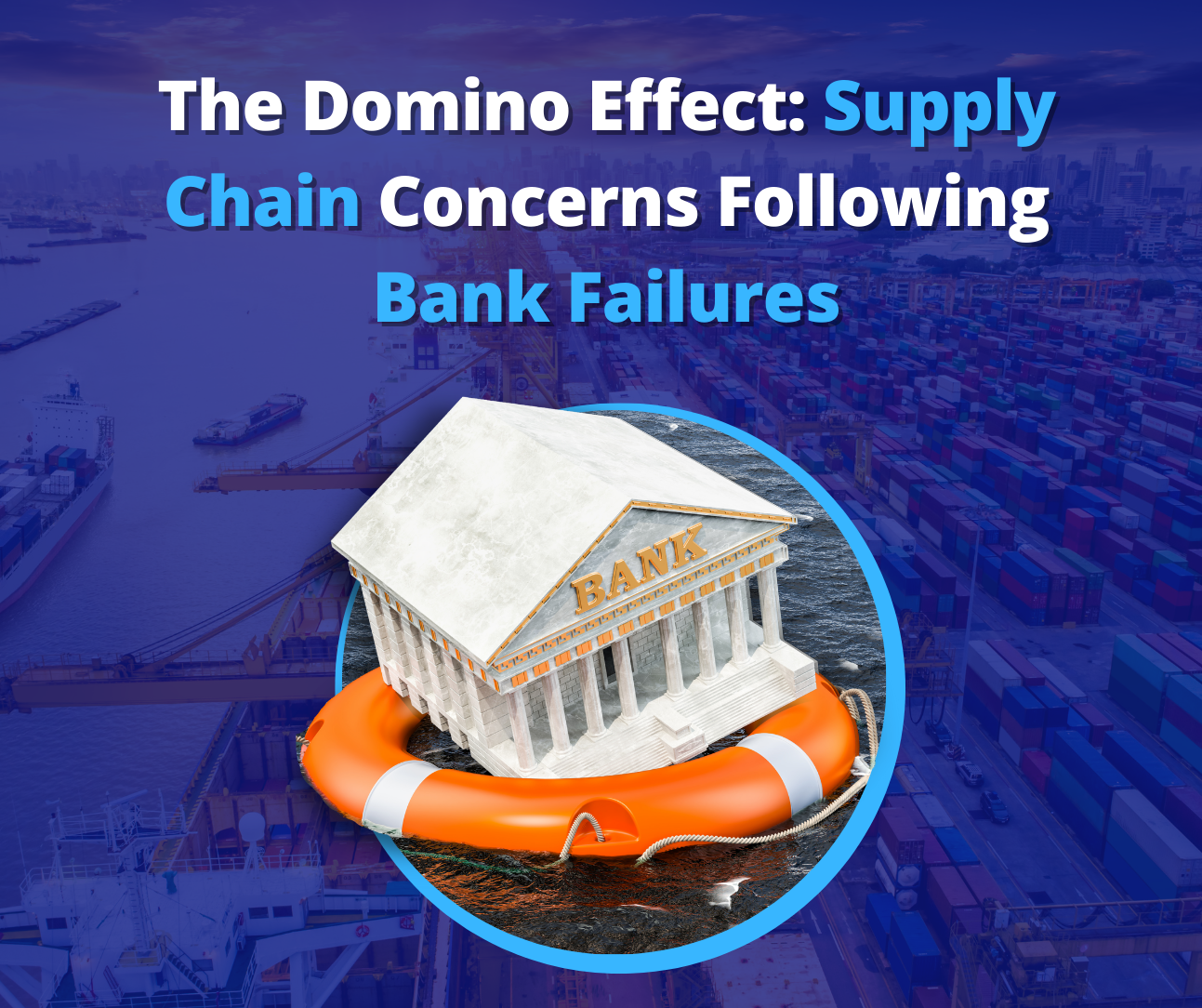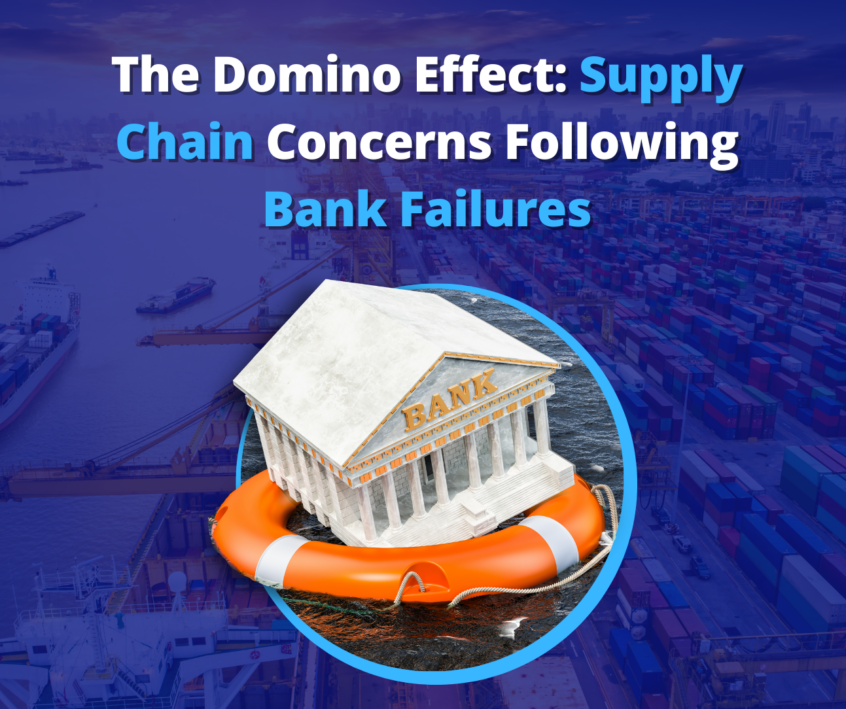
Another critical issue to watch out for
The failure of the Silicon Valley Bank (SVB) and Signature Bank has caused some concern in the global supply chain, especially in the USA, which seems to be the epicenter of this crisis. Despite reassurances from the Fed about guarantees of certain deposits and economic stability, many experts are still worried about the long-term impact on the logistics industry. This rapid collapse raises questions about regulation and contagion across the board.
Reaction from the market
The reaction was exemplified by New York Fed’s Global Supply Chain Pressure Index. On Monday, the index read -0.26. This was below the zero level, consistent with the historical average. Indeed, Associate Professor Jason Miller of Michigan State University critiqued the notion that the problem had been contained. Elsewhere, the Bank of Canada business survey for the 4th quarter of 2022 indicated that there were still price adjustments pending and that many of these relate to previous supply disruptions.
According to the Philly Fed’s manufacturing survey for December 2022, 45% of respondents agreed that supply chain issues had constrained capacity use from moderate to significant levels. Moreover, the US Census Bureau’s quarterly survey of plant usage reported that insufficient material supply in the 3rd quarter of 2022 was three times worse than in the pre-pandemic era. This was discouraging news despite some improvement. For example, data from the Institute for Supply Management showed that commodity shortfalls in some product categories (e.g., semiconductors) ran in excess of two years.
Nevertheless, these statistics are based on rigorous standards and could be pessimistic compared to the New York Fed data. Moreover, the data quoted by professor Miller may lag behind by a few months. Yet, it is undeniable that the supply chain has been disrupted by bank failures. There are specific categories that remain problematic, including automotive and chemical supplies. Shipping delays are being reported. This is crucial regarding aerospace, chemical manufacturing, and defense equipment.
Criticism of arcane metrics
There have been criticisms of the metrics that are relied on by the New York fed. Some consider them archaic and perhaps misleading. One of those critics is John McCown, a senior fellow at the Center for Maritime Strategy. His criticism suggests that the central bank is placing too much emphasis on spot rates for containers that can be volatile at the best of times. In fact, the problem could be that the index creators are trading timelines. For instance, they use spot rates nearly in real-time while describing a projection level based on definitive aggregate indices collected monthly but being reported 35 days after the pertinent period.
When the New York Fed launched its index, it was at the beginning of 2022, around peak time for the economic strains. The data had been collected since 1997 using 27 variables, including cross-border transportation costing and manufacturing data from selected countries, including the USA, the UK, Taiwan, South Korea, Japan, China, and the European Union. Perhaps, that is why the all-clear from the Feds was not reassuring. The banking failure is another dynamic whose full impact is not yet fully known or felt within the global supply chain.
Impact on the logistics industry
There are many points at which the global supply chain intersects with banking. First, banking provides the finance necessary for logistics companies to operate. Secondly, liquidity in the economy means more customers are buying goods requiring logistics. A collapsing or unstable economy is not good news for the global supply chain. Nevertheless, it remains to be seen how far this crisis will reach and its long-term implications for e-Commerce.
Understandably, the logistics industry is wary despite any reassurances. For instance, the Covid-19 era has seen many disruptions and exposed the logistics sector’s fragility. Many are cautious about the future despite attempts to mitigate some of these risks through technological innovations and distribution channel diversification. The unprecedented demand in the e-Commerce sector and the preference for dealing with customers directly means that the supply chain requires sophisticated contingency planning. Moreover, the bank failures do not portend stability, yet stability is what logistics needs now.
Seismic shifts in the global supply chain following the pandemic
Many organizations have been facing a drastically altered business environment following Covid-19. Critically, companies must be agile enough to react to the fast-changing market. Adaptations are no longer an option but a necessity. Crisis management mechanisms come to the forefront, and the failure of two banks associated with startups does not inspire business confidence. The restrictions on movement that were a major feature of the lockdown meant that many businesses came to a standstill. Some actors in the logistics sector, including ports, lost many staff members. Those that remained had to deal with backlogs and a series of global shocks, including the Suez Canal blockage.
Inflation and the Russia-Ukraine war have been featured in many analyses of the global supply chain. Silicon Valley Bank (SVB) and Signature Bank’s failure has now joined that list of growing concerns. Even as companies enter their recovery mode, a financial threat means that they must consider the possibility of returning to the drawing board. Some logistics companies will be directly impacted by the inability to meet payroll as the banking system sorts through the mess created by the collapse. Even those that can recover their funds are not fully guaranteed compensation for lost time or the implications of getting a reputation for not delivering on time.
Will customers become more cautious about spending?
The rapid bank failures have hit customer pockets and added to the feeling that the economy is unstable. Hence, the need to save and plan. That might mean that discretionary spending goes down. Without spending, there is less need for the global supply chain. The implication is that a banking failure initially thought to be the exclusive concern of the tech types in Silicon Valley has the potential to spread to unexpected and vulnerable parts of the economy. The logic industry’s much-referenced resilience has been challenged by changing customer demands. A major bank failure will increase that uncertainty despite the reassurances from the Feds.
The broader context created even more demands on the logistics sector. China and Asia were the presumed manufacturing giants and exporters of the world. The major buyers were Europe and North America. The Covid-19 pandemic hit that dynamic by first changing the consumption patterns in industrialized nations where people were dipping into their savings to purchase essentials like food and medicine online. Then the suppliers dealt with labor shortages and the usual challenges, such as Lunar New Year. China was also recently dealing with a new pandemic and draconian measures to control it. The combination of these disruptions meant that the supply chain was not quite the same as it was before the pandemic.
The experts offer advice on surviving these challenges
Short of exiting the global supply chain, companies have no option but to find coping methods. The first thing to do is to prevent contagion and manage its effects. Precise knowledge about the effects of bank breakdowns will be essential because not every logistics company will be affected similarly. Secondly, it is imperative to build resilience to withstand additional shocks, the logistics sector and global supply chain will withstand those pressures. Baker McKenzie has recently produced a podcast that highlights some of the strategies for shock-proofing the global supply chain.
Some measures include developing an awareness of how the broader global economy impacts local issues. We have seen trade wars and protectionism negatively impacting international trade. That is always unwelcome news for the logistics sector. At the same time, the post-Covid era will require an agile global supply chain that can respond to customers’ needs in various contexts. For instance, the old modalities of just-in-time support may not work when unforeseen events overtake any strategic plans made by decision-makers.
Is there any hope in the reassurances from the Feds?
The fact that the feds have sought to reassure the business community is not a complete guarantee. However, it means that the US government is keenly aware of the implications of the failure of Silicon Valley Bank (SVB) and Signature Bank. Perhaps even more importantly, the authorities are on notice in case further bank failures call for engagement. The risk is that regulators fail to learn the lessons of the latest failure, and another crisis hits before full resilience has been achieved. Not only would that be a sad indictment of the financial system, but it would also imply that the global supply chain has much more chaos to contend with in the foreseeable future.
Entirely changing the global supply chain is no mean feat, and it is important not to panic because of a single incident or series of incidents. Nevertheless, the suddenness of the Silicon Valley Bank (SVB) and Signature Bank crisis shows that the dynamics can change quickly. The assumptions underpinning the recovery from Covid-19 may not fit into the realities of a complex and interconnected global economy. Those in the logistics sector should continue watching for updates from the feds and reconsider their banking options.
Wrapping up
Overall, the failure of Silicon Valley Bank (SVB) and Signature Bank has meant that entire swathes of the US economy are worried. Because this is the giant consumer of the globe, the supply chain worldwide has reason to be concerned. The reassurances about guarantees and economic stability from the feds have not been enough to reassure a logistics sector with three years of instability.



